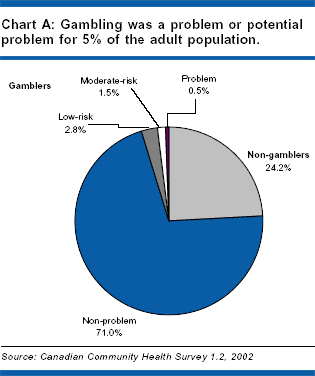Gambling Due To Poverty
UConn Today sat down with UConn School of Medicine’s Thomas F. Babor, addiction researcher and professor in the Department of Community Medicine. Babor is co-author of the new international book, Settling Limits: Gambling, Science and Public Policy, sharing scientific, evidence-based recommendations to help policymakers stop the world’s growing gambling epidemic, including the rise in online gambling.
Q. How prevalent has gambling become, especially the growing frontier of online gambling?
A. In many countries like the U.S., gambling is associated with leisure, tourism, sports, and entertainment, and it has become a major industry. According to some estimates, it is a $137 billion dollar industry in the U.S., and globally it’s expected to grow this year to $495 billion, including $45 billion in online gaming. For example, online sports betting is relatively new, and has not been studied as a public health issue, but from what we know about online gambling in general, it is likely to increase the amount of harm caused by gambling, thereby placing an added burden on families, communities, and states.
Q. How harmful can a gambling problem be for an individual and their family?
A. A gambling problem can be very harmful to an individual and the ones they love. It can cause financial problems, addiction-like symptoms, as well as physical and mental health issues that are usually experienced as a burden by the gambler’s family, social networks, and the communities they live in. The burden of gambling problems is not limited to the gambler. For every problem gambler, it is estimated that six or more other individuals are affected financially, socially, and psychologically.


Gambling Due To Poverty Affect
However, causality between financial losses and gambling is not always simple. Factors like ill-health may effect both gambling and poverty, and poverty may lead to problematic gambling and vice versa. However, it is clear, that gambling can intensify poverty. Gambling-related debt develops when borrowed money is spent on gambling. While approximately 5 percent of people living in neighborhoods with low poverty levels would have serious gambling problems, that number jumped to more than 11 percent in very low socio-economic neighborhoods, particularly where poverty was at its worst, with a high rate of unemployed, high numbers of people living on government assistance and generally rundown and filthy surroundings.
Q. How is the world of gambling changing?
A. The development of new technologies and globalization of the market through the internet is driving greater global investment in gambling products and related tourism. Traditional forms of gambling have been modernized, and new gambling opportunities have been added in the form of internet gambling and other technologies. Governments’ financial needs have provided a significant incentive to expand gambling in many countries. The availability of online gambling opportunities threatens the ability of governments to tax or otherwise harvest revenue from gambling, and thus presents a further inducement for them to protect national markets. The expansion of gambling has been greatest in North America, the Asia Pacific region, and Europe, which have relaxed regulations in the interest of increased employment, tax revenues, and aid to charities.
Gambling Due To Poverty Affects

Q. Despite these assumed benefits, how has the gambling epidemic been harmful to society?
A. Research has connected gambling to criminality, as well as other societal impacts ranging from cultural harm to environmental questions. The number of individuals who produce the most part of total wager or public revenue from gambling is very small in almost all societies. The balance of money collected from the activity is a transfer from the poor to the rich. Gambling as a solution to social revenue needs faces the risk of turning poverty into misery, even for many who do not themselves gamble at all. General population surveys show that gambling is prevalent in many high-income countries. Gambling problems tend to be concentrated, though not exclusively, in the most vulnerable and disadvantaged groups, including ethnic minorities, the homeless, the unemployed, the mentally ill, alcohol and drug users, and those who have lower incomes and socioeconomic status. Gambling as a solution to social revenue needs faces the risk of turning poverty into misery, even for many who do not themselves gamble at all.
Q. How did we let gambling become such a huge problem?
A. Although many people participate in lotteries and go to casinos, the largest share of total money spent comes from a very small minority of heavy gamblers. Gambling generates a surplus of money for the industry and the governments that regulate it. Private companies, good cause beneficiaries, and states are interested in this surplus, which gives rise to two vicious cycles. In the first one, more gambling leads to more public revenue, but also incurs an even higher cost as gambling-related harm increases. This may lead public, private, and civil society organizations to demand more funding for treatment and support services for problem gamblers, instead of setting limits to gambling supply. The second vicious cycle refers to dependencies created by vested interests. These dependencies emerge as state governments and civil society organizations and other good cause beneficiaries use this surplus of money to provide public services. The problem is that problem gamblers and their families are often forgotten, and the economic costs of gambling are not offset by the revenues collected.
Q. Why have public policy changes to reduce gambling been ineffective?
A. Any policy effort to reduce the total money volume of gambling activity has or will likely meet resistance due to the large revenue streams it provides. Public policy on gambling faces two problems. First, gambling produces public revenue which, simultaneously, generates costs due to gambling-related problems. Secondly, vested interests in gambling revenue can limit harm prevention efforts in the public interest. This perspective leads us to include in the analysis not only the game and the gambler but also the political economy of gambling. At both the individual and societal levels, scientific research on gambling and gambling policy can provide a valuable tool for the policymaker.
Q. What are you and your co-authors recommending to curb the growing gambling epidemic and preventing gambling-related harm in Connecticut, and worldwide?
A. When it comes to developing gambling policies, we must remember to serve the public good first and foremost to minimize the burden on the individual and the collective harms. A public interest approach must assess the global expansion of gambling in light of the whole range of its problematic consequences, not only those experienced by the gambling individuals themselves. There is good evidence for many methods of effective prevention and management, including restrictions on availability and access (especially to electronic gambling machines, the ‘crack cocaine’ of gambling), regulating game features, management of risk behavior, treatment interventions, and regulatory regimes such as licensing, taxation, and state monopolies. Implementation of an appropriate combination of these methods has a high probability of success. The difficulty is political: the use of these methods most likely conflicts with philosophical considerations about the ‘nanny state’ and vested financial interests. Nevertheless, preventing gambling-related harm is not possible without limiting the overall volume of the activity, so policymakers would be well advised to consider whether gambling is the best way to achieve the public interest goals, like increased casino jobs or recreational opportunities, compared to the alternatives.
Q. Is there any silver lining in the growth of online gambling?
A. While online gambling environments have many dangers, technological possibilities in consumer protection are available in the form of player tracking, self-exclusion programs, and automated interventions that are among the most effective measures. Researchers, game developers, and policy makers would be well advised to capitalize on these technological opportunities.
Q. What can policymakers focus on for the future?
A. Policy measures in the public interest have the potential to prevent gambling-related problems significantly. It’s important to prevent abusive marketing practices, addictive game features, and venue designs that entice people to spend more time on the machines and in the games. Many of those being initiated to gambling do not understand the risks and the low chances of winning. According to the public interest approach, transparency and honesty should in all cases have priority over monetary interests, public or private. The hope for the winning line and excitement about the result are the key factors that seduce players to continue the game beyond their resources in time and especially money. The impulse to continue can be restrained, for example, by pre-commitments that set an advance limit to amounts of time and money to be spent on the game. And using more advanced technology, player tracking can help with limits. But unless we are able to limit the expansion of casinos, online gambling opportunities, lottery promotions with false promises of instant wealth, and sports betting, the trend to transfer the limited resources of the poor and vulnerable to the private interests and state coffers will continue in countries that care more for quick financial fixes than for an equitable distribution of the collective wealth.
Babor’s book co-authors include gambling experts from five other countries: Pekka Sulkunen, Jenny Cisneros Ornberg, Michael Egerer, Matilda Hellman, Charles Livingstone, Virve Marionneau, Janne Nikkinen, Jim Orford, Robin Room, and Ingeborg Rossow.

If you or a loved one have a problem with gambling, call the free, confidential 24-hour State Problem Gambling Services hotline in Connecticut at: 888-789-7777.